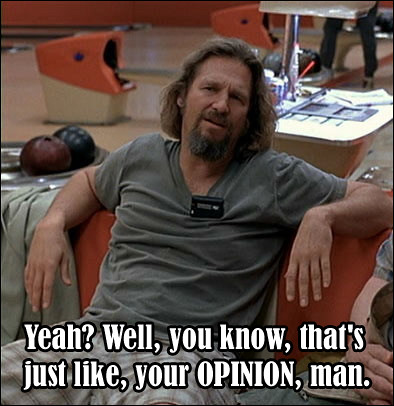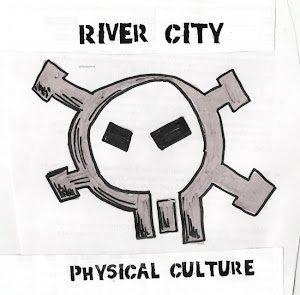Or the less controversial subtitle:

Or the least controversial truth: Different generalizations can be made about different populations.
SO. The traditional wisdom in weightlifting is that one's clean and snatch can be predicted via their back squat. IE, the higher the squat, the higher the total. Obviously, any coach would concede that their are technical elements that contribute to success or failure, particularly stability, depth and speed in the front and overhead squat as well as speed in the third pull.
What exercises are best to supplement the traditional lifts, on an individual or case by case basis is an appropriate argument to have specifically. But to suggest anything other than back squats as the king of exercises generally would be tantamount to heresy. Or so the traditional wisdom goes. It wasn't whether or not back squats were great, it was always whether or not you also needed front squats, or overhead squats, or pulls or power variations for instance.
Various systems of training have argued the relative contribution of the back squat rather than it's necessity. In the Sportivny press, Charniga argues that (due to the high competitive success of athletes who do a greater volume of the full lifts and lesser volumes of back squats) "There does not appear to be any scientific support in the literature for the notion that a "squat routine" (a specific loading in squats for the purpose of achieving higher results in this exercise) would be integral part of the training of weightlifters (2001)". His stance that excessive squatting (12-21% of volume being typical, 15% common amongst successful lifters) will be detrimental to performance sticks out, particularly in america where the back squat is a favorite amongst not only weightlifters, but also powerlifters and other strength athletes.
Ivanov has argued that 127% of your Clean and Jerk would be sufficient leg strength, where as Roman suggested that athletes would be able to Clean and Jerk about that ratio, and Snatch about 80% of their C&J. Basically, most experienced coaches are relating the competitive lifts as some percentage of the back squat. In a recent comment I observed from Glen Pendlay online, he argued that some athletes are C&J'ing weights as high as 100% of back squat, and this was due to (in my understanding of his comments) to the specificity of their training, as well as their technical superiority as compared to novices. I am not sure what to make of this assertion exactly, as many of the citations above were made by russians in laboratory like settings measuring world and olympic champions. This leads me to conclude that most likely where some discrepancies derive from is not content, but rather in labeling and/or measuring.
Furthermore, Pendlay's statements bring to light the role of EXPERIENCE, which is really what I wanted to talk about. The argument that the more experienced the lifter, the more individual strengths and weaknesses matter, and the more specialized training methods are required is to me as simple as stating that training must go from more general to more specific or from easier to harder. DUH.
I have observed in my own students, that over time they go through phases were different things matter, but to be honest NONE of them can be considered advanced, elite, or to have achieved technical mastery or their potential yet. These phases are as follows:
- The bent over RDL-High Pull Reverse Curl Tall clean phase
- The football power reverse curl
- the mature pull to power clean
- the "shit, I needed to squat lower" phase
It's not until they reach stage four (6-24 months after initiating training for most) that they begin to understand why I have been harping on the front squat and their elbows for the last two years.

for fuck's sake
It's at this stage, that more than the back squat, the ability to do the front squat (in the clean) or the overhead squat (in the snatch) in excess of what they were doing in their power variations determines their advancement as a lifter. Those athletes who can front squat more than the power clean keep pushing their PRs up, and it's the same with the OHS and snatch.
Thusly, for beginners, I have always felt that the most relevant lift to predict weightlifting performance was not the squat, but rather the deadlift. Until they get to the stage where they are squatting truly under the bar and under parallel to catch and are no longer power cleaning/snatching, the deadlift represents the raw capacity to elevate the bar from the floor.
Important caveat; I understand that a clean pull is not a deadlift. And I can verbalize all the reasons why. But without significant training time, this does not change the behaviors or outcomes of my beginning crossfitters. They bend down, and they pull the bar up, hard and fast. They catch it high. That's just the way it is, and it stays that way for a few weeks or a few months.
So, when we are talking about novice competitive lifters, who have their own weightlifting shoes, and they snatch over bodyweight and they back squat like they front and overhead, then yes, I agree, 80% and 60% of back squat is a good standard for them. Those numbers just so happen to correspond to the typical ratio novice weightlifters tend to experience between the squats too. Coincidence?
And finally, when it comes to Crossfitters, beginning weightlifters who are not specialists, who enjoy the lifts about as much as they enjoy skin the cats and 2000m rows, well, if you want those guys to clean and snatch more, BRING UP THEIR DEADLIFT. If you want them to continue to make progress past the 1-2 year mark, you better make sure that they are concurrently improving their skills in the front squat and overhead squat. But don't fool yourself: Until they get much better, the deadlift is the best way to get them to lift more in their muscle cleans and power snatches.
And here's the proof: Taken from my record board, I have run SPSS on about 25 of my clients who have 1RM data for at least most of the following lifts:
Clean
Jerk
Snatch
Squat
Deadlift
Press
Front Squat
Overhead Squat
In a regression analysis incorporating the deadlift, front squat and back squat it was determined that you could predict about 94% of the variation amongst clean performance with these three lifts.
In the regression, deadlifts were significant at p=.038, whereas squats (front and back) where not at p=.39 and p=.37 respectively. The correlation between deadlift and clean amongst this group was r=.961. As you can see from this analysis, deadlifting was much more predictive of current outcomes than squatting was. This is not to say that it's time to turn the weightlifting world upside down, and that Chigishev needs to bring his DL up to 600kgs if he wants to take Rezazedah in the snatch.
What it does mean, is that if it's your first year of Crossfitting, and your DL is still not that great, you can do squat snatches from the high hang with an empty bar til yer blue in the face, but the guy that's hitting his 5x5s in the deadlift is going to crush you at most met cons. When I am not working from my laptop and I have more sophisticated screen shot takers and editing stuff, I will put up the outputs from SPSS so you can see the data directly, and I will also publish the same analysis of the snatch.
The gist of it is this: give or take a few (like 5) per cent, your deadlift predicts your clean and snatch like this:
Clean= 52% of DL
Snatch=38% of DL
So, wanna do Isabel as Rx'ed? Get your DL over at least 355lbs (opening up that 135lb power snatch). Wanna do Isabel fast? Make sure that Rx'ed is less than 70% of your max, or in DL terms, make sure you can DL 507lbs.
For the first year or two, it really is that simple. I highly recommend Power to the People by Pavel Tsatsouline to help you bring up your DL fast, if you can't train in person with me.
(I am an expert)







